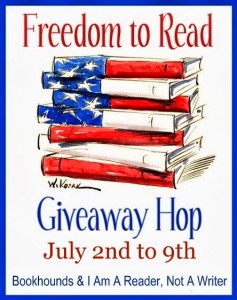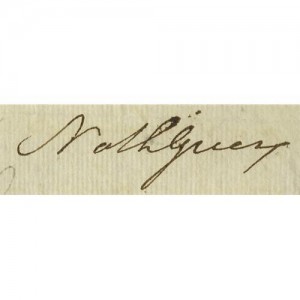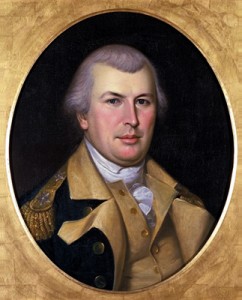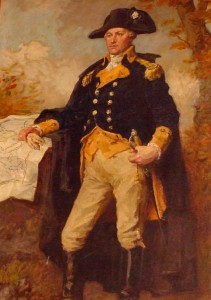 Welcome to my blog! The week of 2 July – 9 July, I’m participating with more than one hundred other bloggers in the “Freedom to Read” giveaway hop, accessed by clicking on the logo at the left. All blogs listed in this hop offer book-related giveaways, and we’re all linked, so you can easily hop from one giveaway to another. But here on my blog, I’m posting a week of Relevant History essays, each one focused on some facet of the American War of Independence. To find out how to qualify for the giveaways on my blog, read through each day’s Relevant History post below and follow the directions. Then click on the Freedom Hop logo so you can move along to another blog. Enjoy!
Welcome to my blog! The week of 2 July – 9 July, I’m participating with more than one hundred other bloggers in the “Freedom to Read” giveaway hop, accessed by clicking on the logo at the left. All blogs listed in this hop offer book-related giveaways, and we’re all linked, so you can easily hop from one giveaway to another. But here on my blog, I’m posting a week of Relevant History essays, each one focused on some facet of the American War of Independence. To find out how to qualify for the giveaways on my blog, read through each day’s Relevant History post below and follow the directions. Then click on the Freedom Hop logo so you can move along to another blog. Enjoy!
 Relevant History welcomes Helena Finnegan, a native of Boston, the city where her love and appreciation for liberty, the sacrifices of those who fought for it, and the revolution began. The 1976 Bicentennial, complete with tall ships and fervent Patriots and British soldiers on historic grounds and waters solidified her commitment to promoting, preserving, and sharing this era. She’s written nationally and internationally and is an educator, researcher, and writer of 18th-century topics. Her work appeared in Patriots of the American Revolution and Journal of the Early Americas magazines and Allthingsliberty.com. She’s working on a historical fiction novel set in 1781. For more information, check her web site, and look for her on Twitter and Pinterest.
Relevant History welcomes Helena Finnegan, a native of Boston, the city where her love and appreciation for liberty, the sacrifices of those who fought for it, and the revolution began. The 1976 Bicentennial, complete with tall ships and fervent Patriots and British soldiers on historic grounds and waters solidified her commitment to promoting, preserving, and sharing this era. She’s written nationally and internationally and is an educator, researcher, and writer of 18th-century topics. Her work appeared in Patriots of the American Revolution and Journal of the Early Americas magazines and Allthingsliberty.com. She’s working on a historical fiction novel set in 1781. For more information, check her web site, and look for her on Twitter and Pinterest.
*****
 He was what would be called today “the complete package.” Strong-willed, determined, respected, self-educated, loyal, and a gifted leader. He’s known as the unsung hero of the American Revolution who helped save the war, though few today recognize his name or deeds beyond monuments or places on the map.
He was what would be called today “the complete package.” Strong-willed, determined, respected, self-educated, loyal, and a gifted leader. He’s known as the unsung hero of the American Revolution who helped save the war, though few today recognize his name or deeds beyond monuments or places on the map.
Yet if it were scripted by Hollywood, New Englander General Nathanael Greene could be an 18th-century action figure. A handsome, flawed, but kind and dependable hero loyal to his Commander-in-Chief and the Glorious Cause. He rose above his disability and learned from his mistakes to become a trusted and sought-after commander capable of seeing the big picture, willing to take risks and do what was necessary to succeed. So it was no surprise when General Washington gave him the two most difficult assignments in the War for Independence: that of Quartermaster General during which he saved the ill-fed and under-equipped army with food, supplies, and forage for animals, and that of commander of the Southern Army where he rebuilt a decimated army and expelled the British from the south. However, his eight-year journey from 1775 to 1783 as Washington’s close friend and most trusted, longest-serving general and eventual hero wasn’t without great obstacles and sacrifices.
“We fight, get beat, rise, and fight again.”
In the winter of 1780, after assuming command of West Point, General Greene was exhausted, ill, and broke having used his health and money to train, equip, supply, and lead soldiers since 1775. Only his courage, faith, determination and unwavering belief kept him going. It was these qualities that General Washington had come to rely upon and turn to, giving him the second most important command of the war, that of commander of the Southern Army.
Six long years after the conflict had begun, Americans’ spirits plunged lower than the value of the Continental dollar. Military defeats, perennial supply struggles, and lack of currency and military pay added to a seemingly endless war.
 Months after the crushing defeat of American forces at Camden, South Carolina, when General Horatio Gates fled north and left the remains of militia and army to reconstitute themselves, the army awaited its new, southern commander. It was against this backdrop that Greene took on what must have felt like an impossible task. After six years of various commands, success as Quartermaster General, lobbying Congress, losing battles, and taking backseats to other leaders, this appointment was monumental. Unwritten and unspoken were the words of his Excellency: save the southern theater and thus, the War for Independence. Washington knew that if there was anyone capable of such a feat, it was General Nathanael Greene.
Months after the crushing defeat of American forces at Camden, South Carolina, when General Horatio Gates fled north and left the remains of militia and army to reconstitute themselves, the army awaited its new, southern commander. It was against this backdrop that Greene took on what must have felt like an impossible task. After six years of various commands, success as Quartermaster General, lobbying Congress, losing battles, and taking backseats to other leaders, this appointment was monumental. Unwritten and unspoken were the words of his Excellency: save the southern theater and thus, the War for Independence. Washington knew that if there was anyone capable of such a feat, it was General Nathanael Greene.
No stranger to hardship and challenges, General Greene was well-prepared for what lay ahead of him in the southern colonies, where Britain was on the verge of winning the war. His famous quote, “We fight, get beat, rise, and fight again,” displayed his ambition and unflagging commitment.
Self-taught, officer material
A self-taught military man, Washington’s “fighting Quaker” was a gifted strategist, advisor, and natural leader. He possessed brilliant organizational skills that he used to save lives as Quartermaster General during the iconic winter encampments at Valley Forge and Morristown.
Greene faced many hurdles to prove that a partially disabled Quaker and an inexperienced soldier could not only fight, but lead men in the coming conflict. Despite prejudice from his fellow Rhode Island Kentish Guards, who felt a lame soldier was not “officer material,” he was promoted to Brigadier General in the Rhode Island state army. General Washington then appointed Greene to the same rank in the Continental Army. In him, Washington must have seen something of himself: a well-read, self-educated, passionate man whose loyalty and ability to comprehend the long-term nature of the conflict made him dependable. Later, despite the terrible losses of Forts Washington and Lee, General Washington didn’t give up on Greene. While Greene sought to restore his reputation, Washington knew Greene would learn from the terrible decision to defend unsalvageable forts and lose men, just as he learned from his errors during the French and Indian War.
 Following his two years as Quartermaster General, Greene resigned the post but kept his field command, returning to campaigns. Though some battles were lost or a draw, he inflicted damage to British forces, gained experience, and learned how to prepare his troops. His greatest challenge came in the southern theater, where all his experiences, military studies, training, and skills were brought together. Entering into the melee after the Americans’ success at the Battle of King’s Mountain, Greene developed a bold strategy. He united his forces with General Daniel Morgan and made the incredible decision to divide his small army in half to delay British engagement, employ guerilla tactics, and gather more soldiers. Working with Morgan, who led Cornwallis away from his supply lines and on a chase through North Carolina, allowed Greene time to re-build and re-equip his men. Understanding the critical need for supplies and preparation, he ordered all boats secured to transport his troops across the Dan River ahead of the British. In what became famous as “the Race to the Dan,” the Americans escaped capture by a few hours and lived to fight on, re-grouping in Virginia, while Cornwallis’s obsession with destroying Greene had exhausted his men and depleted his supplies. Greene later used the boats to slip his troops back across the Dan, chase the British, and engage them in future battles. The southern tide literally turned for the Americans, thanks to General Nathanael Greene, who successfully routed the British from the south, north to Yorktown, Virginia, where they were hemmed in and forced to surrender in October 1781.
Following his two years as Quartermaster General, Greene resigned the post but kept his field command, returning to campaigns. Though some battles were lost or a draw, he inflicted damage to British forces, gained experience, and learned how to prepare his troops. His greatest challenge came in the southern theater, where all his experiences, military studies, training, and skills were brought together. Entering into the melee after the Americans’ success at the Battle of King’s Mountain, Greene developed a bold strategy. He united his forces with General Daniel Morgan and made the incredible decision to divide his small army in half to delay British engagement, employ guerilla tactics, and gather more soldiers. Working with Morgan, who led Cornwallis away from his supply lines and on a chase through North Carolina, allowed Greene time to re-build and re-equip his men. Understanding the critical need for supplies and preparation, he ordered all boats secured to transport his troops across the Dan River ahead of the British. In what became famous as “the Race to the Dan,” the Americans escaped capture by a few hours and lived to fight on, re-grouping in Virginia, while Cornwallis’s obsession with destroying Greene had exhausted his men and depleted his supplies. Greene later used the boats to slip his troops back across the Dan, chase the British, and engage them in future battles. The southern tide literally turned for the Americans, thanks to General Nathanael Greene, who successfully routed the British from the south, north to Yorktown, Virginia, where they were hemmed in and forced to surrender in October 1781.
In less than a year, Washington’s “fighting Quaker” had successfully pulled off a miracle. General Greene’s story is made all the more poignant because it is true. He was an underdog whose determination, confidence, vision, skills and abilities were recognized by someone who gave him the chance to succeed—and ultimately created the opportunity for America to begin.
*****
A big thanks to Helena Finnegan. She’ll give away a $5 Amazon gift certificate to someone who contributes a legitimate comment on this post today or tomorrow. Make sure you include your email address. I’ll choose one winner from among those who comment on this post by Friday 4 July at 6 p.m. ET, then publish the name of all drawing winners on my blog the week of 14 July. And anyone who comments on this post by the 4 July deadline will also be entered in a drawing to win a copy of one of my five books, the winner’s choice of title and format (trade paperback or ebook).
**********
Did you like what you read? Learn about downloads, discounts, and special offers from Relevant History authors and Suzanne Adair. Subscribe to Suzanne’s free newsletter.

My fourth Great Grandfather, Jacob Fulmer, served under General Greene in the South Carolina militia. Jacob Fulmer grew up in the Dutch Fork of South Carolina. He must have told stories to his sons of his adventures in the army, as his son Adam Fulmer named his son, Ephrom Greene Fulmer, after the General.
Welcome to my blog, Pam. That’s a cool ancestry. Are you in the DAR?
Thank you for taking the time to read & comment! How exciting to have a connection to such a selfless hero! It would be wonderful to discover a diary with those stories How did you trace that connection?
How did you trace that connection?
I love Nathanael Green. The more I learn about him, the more it makes me wonder why he is not mentioned more in the history books. I don’t know of any other officer who personally sacrificed so much of himself for the cause. He sacrificed his personal belief of pacifism and pretty much ended the war in financial ruin due to his personally taking responsibility for supplying his troops. Thank you for putting out more information on this little known hero of the revolution.
D. Tyler, thanks for your comment. The American Revolution left a number of signers of the Declaration of Independence in terrible shape financially (Nathanael Greene’s situation) as well as trashing the finances of many loyalists.
What is also so sad is that shortly after his death and burial the grave site was forgotten. Can you believe it: until 1901 his final resting place remained unknown. The remains of the 2nd greatest general of the Rev War was lost. Check it out:
http://www.revolutionarywararchives.org/greenebones.html
Thanks so much for taking the time to read & for your comment! I agree. I too, love Gen. Greene. He really was a tremendous man individual who stayed focused on the cause, and despite prejudice, disability and terrible loss, persevered never wavering in his belief in the Glorious Cause. We could use many more Gen. Greenes!
I am a direct descendant to Nathaniel Henry Greene and I am very patriotic!I love this country and what it stood for in by gone years and only hope that the determination of our founding fathers can be rekindled somehow someday soon!Cant wait to read this blog!Happy 4th of July folks1
Happy 4th of July to you, too, Kathleen! Are you in the DAR?
Thanks for your thoughts & sharing that! How lucky to be a direct descendant of this Revolutionary War hero! How does your lineage fall from Gen. Greene? I have always been fascinated by descendancy from our country’s inception.
Nathanael Greene’s other superior traits: patience and people management. In the South he somehow was able to integrate militia, State, and Continental troops, but even more remarkably, he was able to understand the eccentricities of such dynamic individualists as Francis Marion, Thomas Sumter, and Henry Lee. Trying to keep those three on the same page was a challenge–and trying it was, as their correspondence demonstrates. Without all four we might be speaking with English accents.
Anybody who could get buy-in from Thomas Sumter has my admiration.
Believe me, the buy-in was on Sumter’s terms. Marion seemed more amenable to assisting; he just rarely had the resources to support Greene. Neither reported directly to Greene, both being South Carolina militia generals, officially reporting to Gov. John Rutledge. Rutledge did delegate authority over Sumter and Marion to Greene, but the Gamecock and the Swamp Fox were very selective in their conformance to Greene’s ‘orders.’ I discuss the Marion-Greene relationship Saturday.
I am excited to read more about this intricate southern alliance on Saturday! Greene truly was unique in so many ways. How he integrated the military and civilian sides of the Patriots remains yet another feather in his cap!
I am a direct descendant to General Nathanel Henry Greene,and a proud American patriot1i love your blog on him and yes he was a fighting quaker and a very good friend of George Washington!He had the stregth to stand for the american people even though he was disabled!He was extremely important in the events that turned the war around and he was well loved by his commander!His last wish was to enjoy his time on earth at peace in his garden..He really was a lover not a fighter at heart and fought for his right to love and be at peace!We could use more leaders like him and our founding fathers whom are not out for their own gain but rather willing to fight for others and do good!
My mom’s claim to DAR membership was a fighting Quaker ancestor. Inspired to learn more about Nathanael Greene. Thanks.
There were many Quakers that chose to fight for our freedom during the Revolutionary War, and I admire their choices. There is always a cost to freedom, and it is usually a dear cost. Your ancestor made a hard choice.
Great to see you here again, Liz. And it sounds like you already have a foot in the DAR door.
Hello Kathleen and Pam,
Suzanne asked if you were DAR members. As a member of the SCDAR and chapter regent, I want to encourage you to look at the NSDAR web site. It sounds like you are both lovers of history, and I believe you would enjoy being a part of this international lineage organization that focuses on service and education.
What Sheila said.
Thank you, Helena, for focusing our attention on this brave man. I am always amazed by the influences on our choices and decisions. I understand that Nathaniel Greene was settled in a career as a blacksmith, but then his interest in military science took over. Amazingly before he joined the army, he attended a military parade. For that bold action that showed his interest in the military, he was thrown out of a Quaker meeting. What if he hadn’t followed his inclinations? I am glad we don’t have to wonder.
Thanks so much Sheila! There has been much speculation over why Gen. Greene was suspended from the Quaker meeting which, didn’t seem to bother him at all. What a turn of events it would be if it were indeed because of his attendance at a military parade. How luck for America!
I’ve always like underdogs; the self-educated, the ones who reached their goals through non-traditional means. I find it especially grin-worthy that Greene did so much better than Horatio Gates, who was, if I’m not mistaken, a professional soldier.
Having been born in Rhode Island myself, I’d heard of Nathanael Greene since childhood, and one of my cousins married into the Greene family. Years ago, I’d asked her husband if he was related to the famous general and he said he was, but wasn’t sure exactly how.
Tracy, yes! And the really interesting twist about Greene is that he didn’t have a clear-cut win for any southern battles. He triumphed by losing battles — and causing the Crown forces to exhaust themselves and their resources in effort to gain the upper hand on him.
A “war of attrition”, then.
Hi Tracy and thanks! Yes, I agree – Horatio Gates was an unmitigated disaster in South Carolina fleeing the Camden battlefield some 200 miles north, effectively unraveling the southern Army. It seems fitting then, that those hearty souls who stuck it out until Gen. Greene arrived would be led by a fellow hearty, brave and determined soul – a non-professional soldier like themselves.
We are pleased that Helena Finnegan brings forward a real player in the Southern Campaign of the American Revolution. Greene obviously understood the ways and capabilities of the militia as he demonstrated at Eutaw Springs. Thanks for a fine essay. With the relationship between Greene & Marion, Camden to Eutaw Springs, Greene needs to come to the Francis Marion Symposium.
Thank you for your compliment George! In many ways, (in my opinion) Gen. Greene embodied the Patriotic spirit of the southern theater. And I agree, Gen. Greene would be the perfect addition to the Francis Marion Symposium and I would be happy to escort him The Gen. Greene Homestead in Rhode Island would be a good contact for that. http://www.nathanaelgreenehomestead.org/
The Gen. Greene Homestead in Rhode Island would be a good contact for that. http://www.nathanaelgreenehomestead.org/
Thanks for the snapshot bio of an unsung hero. I heard the name Nathanael Greene in passing in school but this blog has exposed me to more Revolutionary history than school ever gave me, and I’m thoroughly enjoying myself as I learn.
Helena, Suzanne stated you were working on a novel; please keep us posted as to its progress.
Happy Independence Day everyone!
Thank you so much Linda! I take that as a huge compliment that this essay provided more insight and education into the American Revolution (my favorite time period and in particular, about Gen. Greene). He was a fascinating man & there are some very good books written about his life. Thanks, I will definitely keep you posted on my novel’s progress Happy 4th of July!
Happy 4th of July!
Dear Suzanne,
Thanks for this post.
Hadn’t heard this quote before but love it!
“We fight, get beat, rise, and fight again”
It’s one of Greene’s best quotes.
It’s one of my personal favorites. It shows Gen. Greene’s unflagging determination and courage in the face of continued adversity.